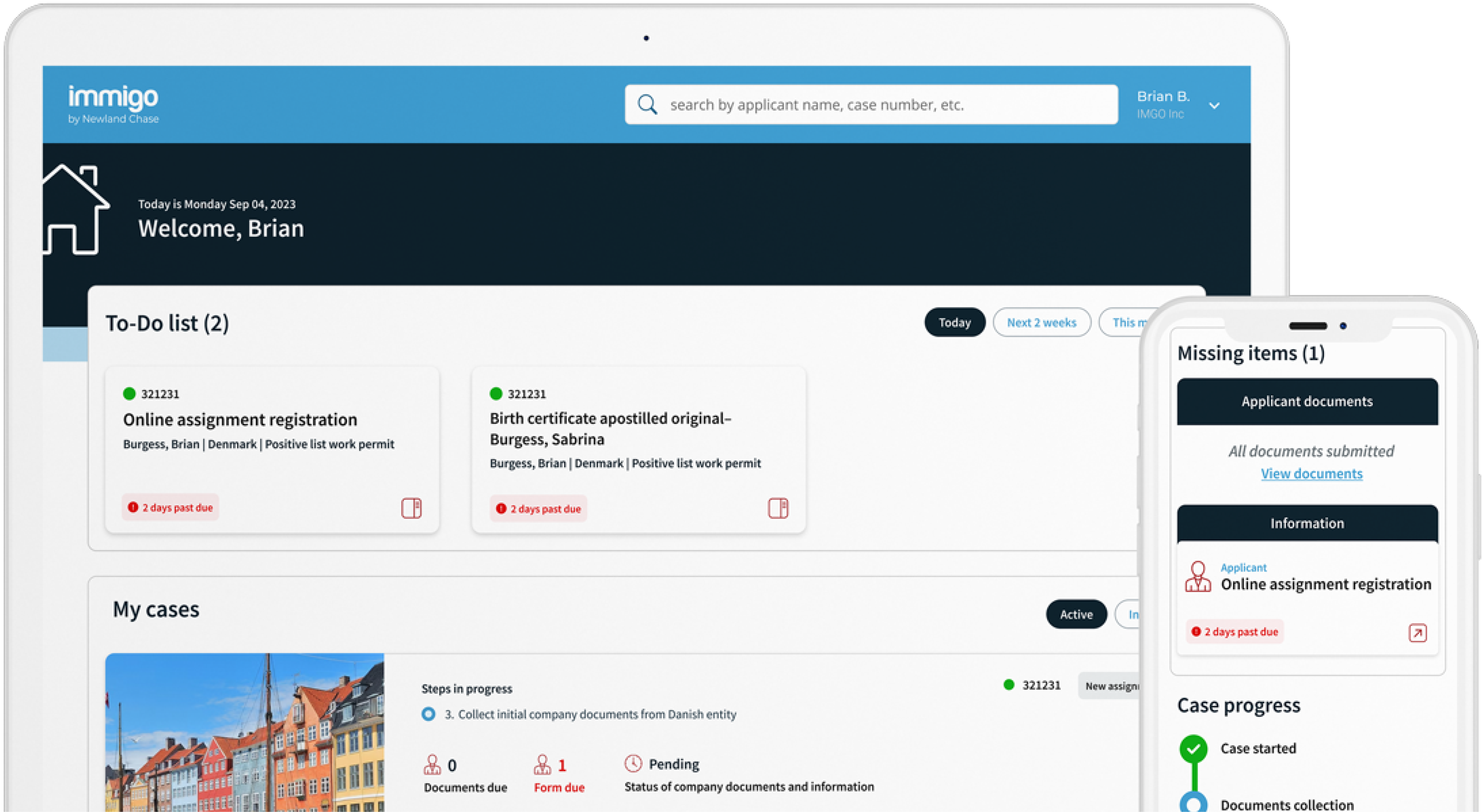Get The Visibility Your Company Needs
Reduce compliance risks and mobility costs while managing individual and project-related travel with ImmiSMART: the solution that unifies your travel and mobility programs.
The UK’s Tier 2 Quota: The Carousel That Keeps Spinning?
August 8, 2018
“So when will this end
It goes on and on
Over and over and over again
Keep spinning around
I know that it won't stop
Till I step down from this”
“Sick Cycle Carousel”, Lifehouse, DreamWorks Records (2000)
By Antonio Lam, Managing Director, United Kingdom, Newland Chase
Like the song says… Tier 2, when will this end? It goes on and on, over and over again, keep spinning around, I know this won’t stop till I step down from this … – or insert whatever other circle reference you prefer – carousels, record players (for those into classic vinyl), The London Eye, Piccadilly Circus at rush hour – but you get the point. The more things change, the more things stay the same. And yesterday’s solutions become today’s problems become tomorrow’s solutions become the day-after’s solutions, ad infinitum. Such is the saga of the UK’s Tier 2 visa system.
Part 1 of 2
The Carousel That Keeps Spinning?
The ‘Silver Bullet’ is Discovered
I recall the news breaking in July 2010 that the Government had finally found the ‘silver bullet’ to control immigration – a Tier 2 quota. Thus, from April 2011, an annual quota of 21,700 (now reduced to 20,700) has been in place for foreign nationals coming from abroad seeking to take on permanent jobs in the UK. And for the UK companies which, in many cases, sorely need their labour.
On the face of it, the Tier 2 quota was, and is, very much non-discriminatory. The allocation of available quotas applies to all sectors, all regions and all occupations and labour needs. To authorise a sponsoring employer to place an overseas worker, the sponsoring employer must simply apply to the Home Office (formerly UKBA and later UKVI and/or any and all other variations along the way) for a Restricted Certificate of Sponsorship (RCoS). A panel then sits on a monthly basis and reviews nationally to determine whether the number of RCoS applications has exceeded the threshold of the unevenly spread quota, using a defined set of points-based criteria.
Whilst there have been opposition views to this silver bullet – perhaps most notably from senior Cabinet Ministers at the time of its introduction, who condemned the move as a business stopper – the quota system went forward.
Since that time, the opposition view lessened as the quota was never reached. Year on year, there was always an abundance of remaining allowance that went to the shredding bin, and the year restarted anew with a fresh quota. Businesses breathed a sigh of relief that they were still able to hire the needed overseas workers at the right time for the right need without much difficulty.
The only exception was the briefest of stints in 2015 wherein for two succeeding months the demand exceeded quota. But even then, the rumblings and concerns on the part of business and the opposition soon resolved themselves and all went back to normal, when the following months the quota held sufficient. Most immigration practitioners (myself included) and business leaders called it an aberration, a one-off phenomenon, a glitch in the system.
The Return of the ‘Glitch’
However, much to our chagrin, the glitch in the system came back last year – and this time with a vengeance. In December 2017, the oversubscription for the monthly RCoS allocation hit its highest level in all of the seven years since its inception. Then, for seven continuous months – on into 2018 – the system spit-out refusals of, on average, around 50% of RCoS requests each month. The chart below tells the story:
|
Submitted |
No. Of RCoS Requested |
RCOS Granted |
Total Not Approved |
|
06/11/2017 – 05/12/2017 |
2891 |
1,527 |
1,364 |
|
06/12/2017 – 05/01/2018 |
3230 |
1,536 |
1,694 |
|
06/01/2018 – 05/02/2018 |
3916 |
1,707 |
2,209 |
|
06/02/2018 – 05/03/2018 |
3600 |
1,347 |
2,253 |
|
06/03/2018 – 05/04/2018 |
4918 |
2,193 |
2,725 |
Immigration practitioners (myself, once again included) and businesses alike were dumbfounded and embarked on a frenzied search for a reason. And in the several months of searching, we generally seemed to agree that the reason was that the skills currently in shortage became even more acutely so after Brexit. It appeared that many in-demand skilled foreign workers simply took jobs elsewhere, i.e. doctors and nurses, and the increased demand for new RCoS overloaded the system.
With this continual pressure on the system, and without action to significantly change the system, the problem grew over several months. Finally, in June the Home Office responded to take some of the pressure off the system by removing doctors and nurses from the quota from 6 July 2018 (whilst kept under review). The action by the Home Office this time around was welcome news (albeit its delay having caused chaos for seven months running).
The Crisis Averted… or Not?
Thus, businesses and my counterparts in the immigration sphere can once again breathe our collective sigh of relief that things should finally go back to normal now that 6 July has arrived. But will it? My guess is ‘no’. I believe the issues we faced in 2015 and now again in 2017 and 2018 are not a glitch in the system. It is not merely that Brexit is looming and thereby driving overseas workers out of the country, or that there is some exponential growth to some sectors of the economy. I believe the problem is much broader than this. The problem has actually been building through years of disconnect between the needs of business aims and the goals of Government which has resulted in a fundamental and deep overall imbalance in the system.
Whilst I’m hesitant to completely denounce the quota system as a wholly ineffective method of controlling migration (although one could argue that the present quota should instead be for all routes rather than only for workers), the issues we now face boil down to this disconnect between business and government, the Government’s misunderstanding of controlled migration, and the lack of proper strategic planning on the part of businesses. And only action by both is going to remedy our problem long-term.
Antonio Lam is the Managing Director, UK, for Newland Chase. Antonio is a qualified solicitor, non-practicing barrister, and OISC level 3 accredited immigration advisor with more than 15 years’ experience in UK and EU immigration. He specialises in complex investment, employment, and family immigration for corporate and private clients. Antonio holds an LL.B (Hons.) Law degree from Swansea University. Based in London, he can be reached at [email protected].
Editor’s Note: This is the first instalment of a two-part series. Get further valuable insights from Antonio on the UK’s Tier 2 system. Watch for Part 2: Getting Off the Carousel next week.
For more on Tier 2, the ongoing shortages, and strategies for companies to cope, readers are encouraged to view the on demand recording of Newland Chase's recent webinar “Responding to Rejection: The Ongoing Shortage in the UK's Tier 2” here.




